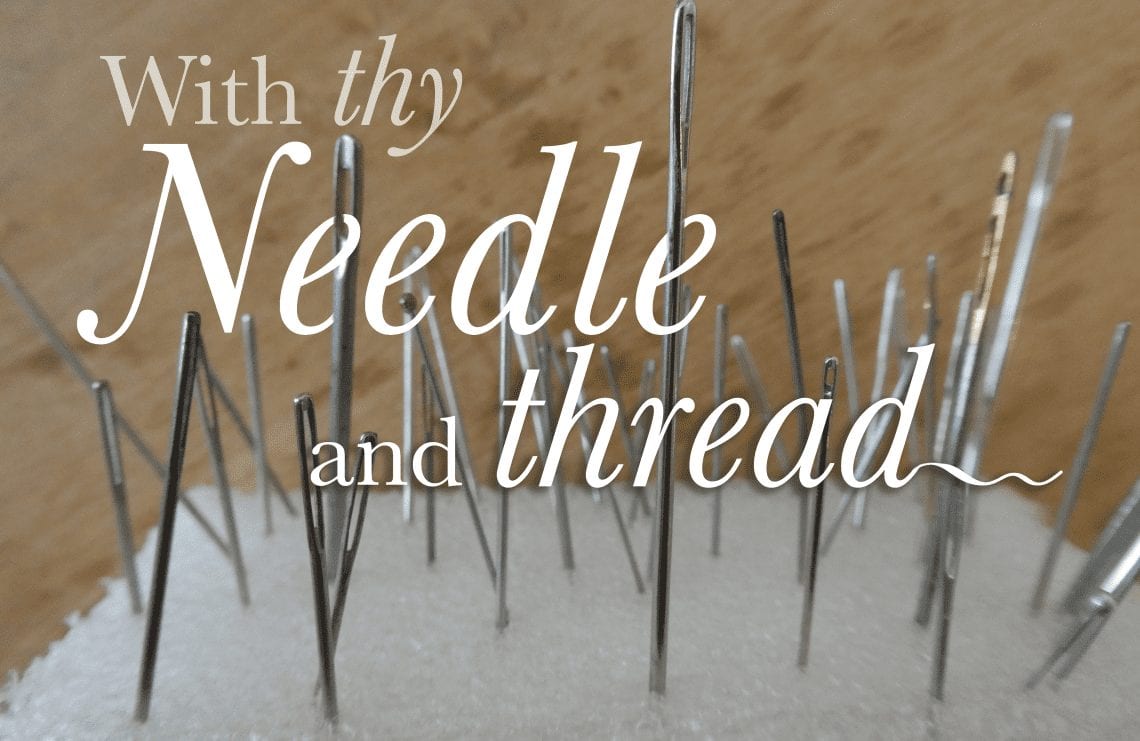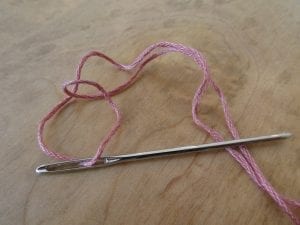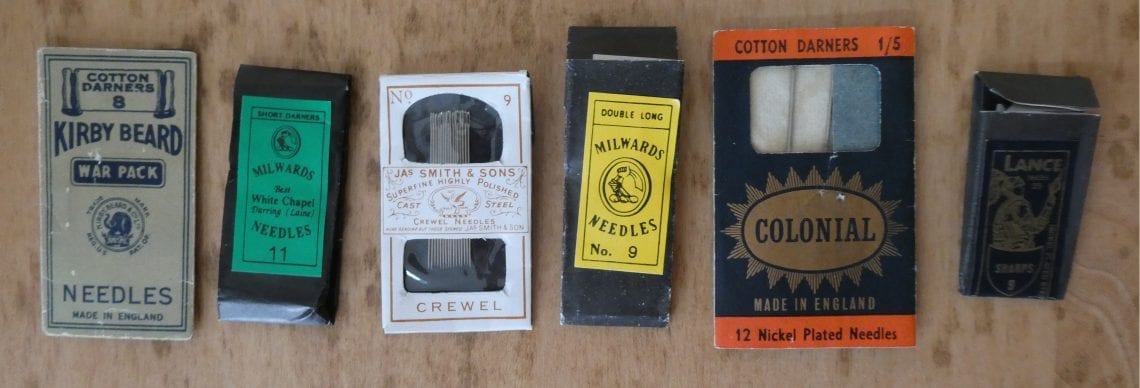 By Kaitlyn Munro
By Kaitlyn Munro
In my recent dive into historical sewing instruction manuals,
I was emotionally struck by a passage in The Ladies’ Hand-book of Plain Needlework written by H.G. Clarke in 1842. It puts best into words every feeling that I have about sewing and the importance of conserving even the most unlikely of everyday household textiles.
 “No one can look upon
“No one can look upon
the needle
without emotion:
it is a constant companion
throughout the pilgrimage of life.”
We find it in the first instrument of use placed in the hand of budding childhood, and it is found to retain its usefulness and charm even when trembling in the grasp of fast-declining age. The little girl first employs it in the dressing of her doll, then she is taught its still higher use, in making up some necessary articles for a beloved brother, or a revered parent. Approaching to womanhood, additional preparation of articles of use, as ornaments for herself and others, call for its daily employment; and with what tender emotion does the glittering steel inspire the bosom, and beneath its magic touch, that which is to deck a lover, or adorn a bride, becomes visible in the charming productions of female skill and fond regard. To the adornments of the bridal bed—the numerous preparations for an anxiously-expected little stranger and the various comports and conveniences of life, the service of this little instrument is indispensable. Often too it is found aiding in the preparation of gifts of friendship, the effects of benevolence, and the works of charity. Many of those articles, which minister so essentially to the solace of the afflicted, would be unknown without it; and its friendly aid does not desert us even in the dark hour of sorrow and affliction. By its aid we form the last covering which is to enwrap the body of a departed loved one, and prepare those sable habiliments, which custom has adopted as the external signs of mourning.”
Today I have the privilege of using this same magnificent tool to conserve many of the textiles created at the hands of our ancestral needle smiths.

Source:
The Ladies’ Hand-book of Plain Needlework
Containing clear and simple instructions, whereby to attain proficiency in every department of this most useful employment.
H.G. Clarke
1842

I loved this Soliloquy.
I treasure my needle and thread. I use it almost as a foregone conclusion.
I’m guilty of taking it for granted.
It stitches my troubles together and gathers my resolve to move on. Stitch by Stitch!
How sweet and true. I remember learning to sew on a button, to hem a tea towel, make an apron, doll clothes, then some for myself and my children. Now, I rarely pick up a needle except for needlepoint!
Thank you for a lovely chance to reminisce.
Very nice!
Yes! Such lovely thoughts! And I love simple tools! Reading these words my own life sped ahead with the needle! It accompanied me my whole life, up to creating items and mending clothes today. Which I am doing more and more in the face of our world wide problem of over consumerism. Since a while now, I always carry a needle and thread with me on my escapades.
Thank you for sharing. Textile Fixer
In 2002 in Vancouver BC, I mounted a show called Much Depends on This Quilt. I did an historical look at all the materials that make my sewing possible: growing cotton, doing thread-making, weaving, printing & dyeing, making scissors, pins & needles, thimbles, sewing machines, & the quilt makers who teach the skills to others. This collection of 10 quilts is now in the collection of the New England Quilt Museum.
I endeavored to make viewers aware of how complicated the history of any small thing can be. A needle has metal that is mined by someone, then smelted somewhere, then made into wire somewhere else, then crafted with an eye & point, then packaged. At each stage there are people being paid, people doing transportation, people designing & maintaining machinery of all kinds, advertisers, merchants & on & on. The more questions you ask the larger the endeavor of making a needle gets! I really loved doing these 10 quilts because I wanted to give full honor to all the people who make my quilt-making possible & make others aware of the huge social network that produces something. I try not to take things for granted.
Deeply touched !! WHY had not I realized this essential primordial tool was/is not KEY to human life! WOW My life is devoted to collecting textiles form the hands of my fellow ladies form Time Immemorial!!
Oh, yes, I never travel without my needles! Sounds like this book is both a valuable sourcebook for needle work instruction and an opportunity to revisit the everyday uses of the needle.
Thank you for sharing this Julia. While many of my friends wield knitting needles ,I take comfort in the single needle , piercing fabric, joining, embellishing, capable of all things it seems. Brilliant. A great metaphor for care and restoration of all that’s in need.